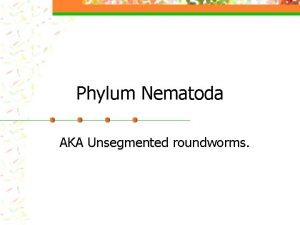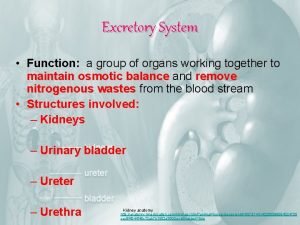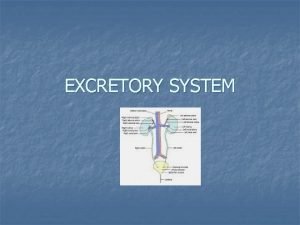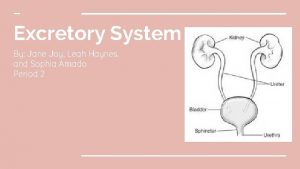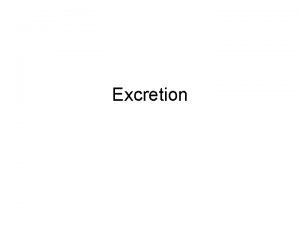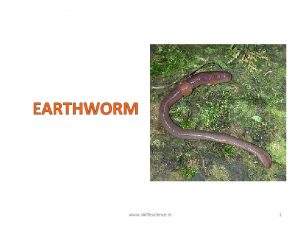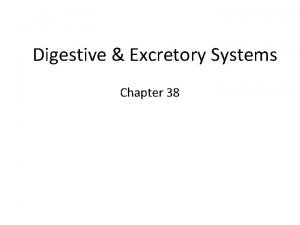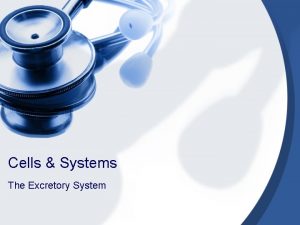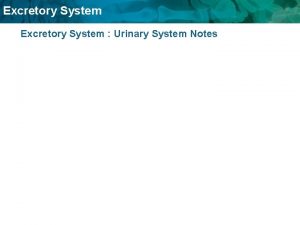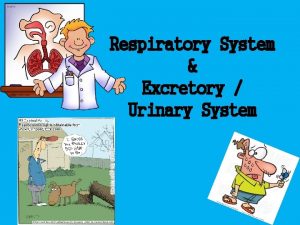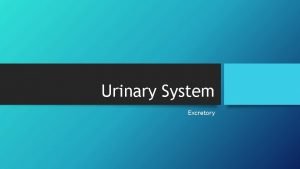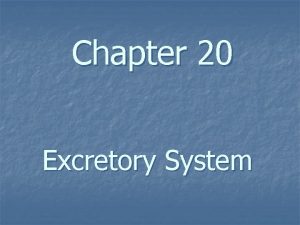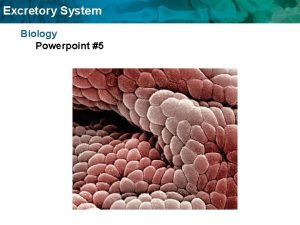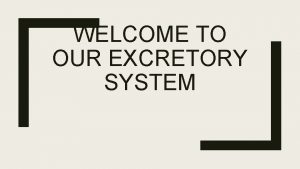Respiratory System Excretory System Respiratory System Respiratory System












- Slides: 12

Respiratory System & Excretory System Respiratory System

Respiratory System • Function: – Moves oxygen from outside the body into the body – Removes Carbon Dioxide and Water from the body • Definitions: – Respiration: the process in which oxygen and glucose undergo a complex series of chemical reactions, releasing carbon dioxide and water (and energy for cells to use) – Breathing: Movement of air into and out of the lungs Click here to see a short video of respiration

Path Way of Air (part one) • 1. Air enters the nose • 2. Moves into the nasal cavities • 3. Mucus cleans the air and moistens it – Cilia (tiny hair-like structures) move mucus into the throat to be swallowed • 4. Air moves down the throat or pharynx • 5. The trachea (windpipe) leads from the pharynx to the lungs. – Rings of cartilage keep the trachea open – Also lined with mucus and cilia Click here to see a video of cilia

Path Way of Air (part two) • 6. Air moves into the Bronchi, which direct the air into the lungs • 7. Lungs are the main respiratory organ. – Inside the lungs the bronchus divide into smaller and smaller tubes. At the end of the smallest tubes are the alveoli. Click here to see a video of The air tubes

• • • Alveoli & Gas Exchange Tiny sacs of lung tissue specialized for the movement of gases between air and blood. Surrounded by a network of capillaries. Gas Exchange: Here the blood picks up oxygen from the air and transfers it to the blood. Click here for a short video clip on the effects of smoking on the alveoli

Muscles for Breathing • Diaphragm: a large dome shaped muscle at the base of the lungs • When you breath, the actions of your rib muscles expand or contract, causing air to flow in and out of the lungs. Click here for a short video on how the diaphragm works

Breathing & Speaking • Larynx: voice-box, located at the top of the trachea • Vocal Cords: two folds of connective tissue that stretch across the opening of the larynx. • The vocal cords vibrate as air passes over them to produce sound (your voice) Click here for a short video clip of the Vocal Cords doing their thing

The Excretory System • Definition: The system in the body that collects wastes produced by the cells and removes them from the body, called excretion. • Purpose of Excretion: to maintain homeostatis (keeping the body and internal environment stable and free of harmful levels of chemicals) Click here for a short video clip about the Excretory System

Organs of the Excretory System (part one) • Kidney: removes urea and other wastes from the blood. • Act like filters • Urea: chemical that comes from break down of protein • Urine: Wastes are eliminated in the urine (watery fluid that contains urea and other wastes)

Organs of the Excretory System (part two) • Ureters: urine flows from the kidneys through two narrow tubes • Urinary Bladder: the ureters pass to the bladder, a saclike muscular organ that stores urine. • Urethra: the urine leaves the body through this small tube.

Filtration of Wastes Click here to see a short video clip of how the nephron works Have the steps below copied in your notes • • 1. Blood flows into the kidney and into a nephron (tiny filtering factories) 2. Blood reaches a cluster of capillaries where urea, water, glucose & other materials are removed 3. Needed materials are reabsorbed (glucose & water), but urea remains 4. Wastes are passed on through the urine and eliminated in urine.

A Kidney Transplant Click here for a short video Showing a Kidney transplant (it’s cool!)
 Conductive zone vs respiratory zone
Conductive zone vs respiratory zone Excretory organ of mammals
Excretory organ of mammals Excretory system of phylum nematoda
Excretory system of phylum nematoda What does the excretory system do
What does the excretory system do Major functions of the excretory system
Major functions of the excretory system Which is excretory organ
Which is excretory organ Jessy gonzalez
Jessy gonzalez Jane joy
Jane joy Section 38-3 the excretory system
Section 38-3 the excretory system Reproductive system of earthworm
Reproductive system of earthworm Section 38-1 food and nutrition
Section 38-1 food and nutrition Fetal pig excretory system diagram
Fetal pig excretory system diagram 5 facts about the excretory system
5 facts about the excretory system


